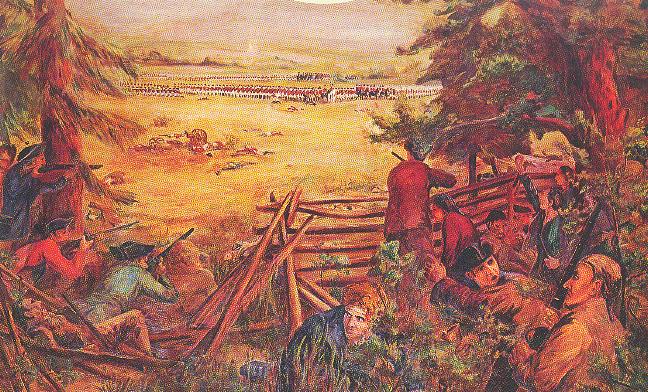What pre-War battle for Independence took place today?
 May 16, 1771 – A North Carolina governor’s militia quelled a rebellion called the Battle of Alamance today. Waged by a patriotic group known as “The Regulators,” they were fighting against abuse by royal government officials.
May 16, 1771 – A North Carolina governor’s militia quelled a rebellion called the Battle of Alamance today. Waged by a patriotic group known as “The Regulators,” they were fighting against abuse by royal government officials.
Largely composed of low-income men from the Western part of the state, they wanted to regulate their own taxes and affairs. After attempts at peaceful negotiations proved useless, 2,000 Regulators battled the government’s troops.
However, the group had not anticipated being attacked; they were disorganized and had no officer ranked higher than Captain. Their plan had been to intimidate Gov. William Tryon’s militia with a show of force from their superior numbers. Instead, after one day of fighting, the Regulators suffered heavy losses and subsequently disbanded.
Named for nearby Great Alamance Creek, the battle took place in the central Piedmont, about six miles south of present-day Burlington, North Carolina.
While in this case the patriotic armed resistance did not succeed, in just a few years, larger numbers of Americans dissatisfied with governmental mistreatment would join forces to fight — and win — the War of Independence.
Sources
Words of Wisdom
He gave the Regulators a choice — to return peacefully to their homes or be fired upon. They had one hour to decide. After the hour was up Tryon sent an officer to receive their reply. 'Fire and be damned!' was their answer. The governor then gave the order, but his men hesitated. Rising in his stirrups, he shouted, 'Fire! Fire on them or on me!' The militia obeyed, the Regulators responded in kind, and the battle of Alamance was on.




